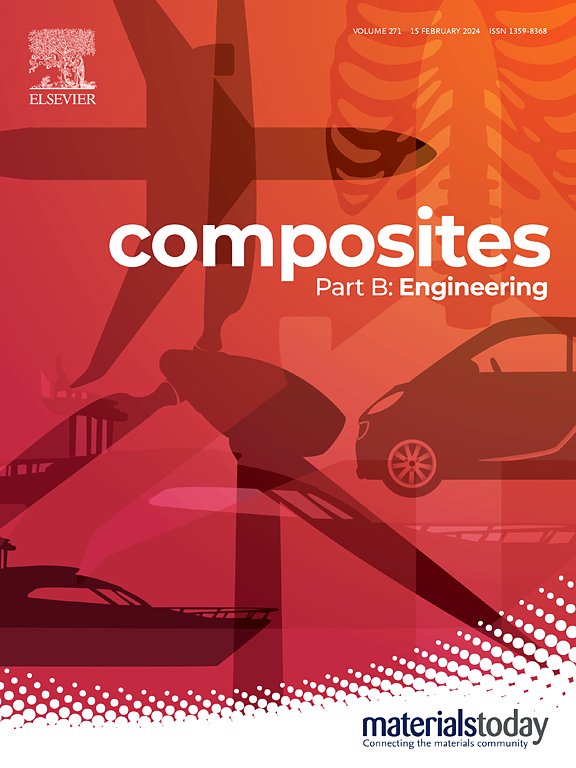Mechanical performance of novel curved sandwich structures featuring 3D printed continuous carbon fiber/polyamide 6 composite corrugated core with rail interlocking
IF 12.7
1区 材料科学
Q1 ENGINEERING, MULTIDISCIPLINARY
引用次数: 0
Abstract
The integration method of skin and core components in sandwich structures significantly influences their overall performance and functionality. This study introduces an innovative design for curved sandwich structures incorporating a rail interlocking mechanism, which demonstrates superior weight-specific mechanical properties compared to conventional joining techniques. The sandwich skins were fabricated using carbon fiber/epoxy composites prepregs via vacuum bagging, while the rail interlocking core structure was manufactured using 3D printing technology with continuous carbon fiber/polyamide filament. Mechanical performance was evaluated through three-point bending tests and compared with alternative joint configurations, including contact, adhesive, and bolt joints. Theoretical analysis was also conducted to derive failure strengths for various failure modes, and failure maps were constructed based on core and skin thickness. The results indicate that the rail interlocking structure exhibited superior mechanical performance, demonstrating an 18.8 % increase in specific strength and up to 22.9 % higher energy absorption capacity compared to adhesive model. The developed theoretical models accurately predicted failure loads across different failure mechanisms, demonstrating excellent agreement with experimental results, notably achieving a deviation of only 4.7 % for the adhesive model. It was noteworthy that the novel rail interlocking sandwich structure showed effectiveness in achieving lightweight design, superior mechanical performance, and practical advantages for curved and large-scale applications is particularly noteworthy.
求助全文
约1分钟内获得全文
求助全文
来源期刊

Composites Part B: Engineering
工程技术-材料科学:复合
CiteScore
24.40
自引率
11.50%
发文量
784
审稿时长
21 days
期刊介绍:
Composites Part B: Engineering is a journal that publishes impactful research of high quality on composite materials. This research is supported by fundamental mechanics and materials science and engineering approaches. The targeted research can cover a wide range of length scales, ranging from nano to micro and meso, and even to the full product and structure level. The journal specifically focuses on engineering applications that involve high performance composites. These applications can range from low volume and high cost to high volume and low cost composite development.
The main goal of the journal is to provide a platform for the prompt publication of original and high quality research. The emphasis is on design, development, modeling, validation, and manufacturing of engineering details and concepts. The journal welcomes both basic research papers and proposals for review articles. Authors are encouraged to address challenges across various application areas. These areas include, but are not limited to, aerospace, automotive, and other surface transportation. The journal also covers energy-related applications, with a focus on renewable energy. Other application areas include infrastructure, off-shore and maritime projects, health care technology, and recreational products.
 求助内容:
求助内容: 应助结果提醒方式:
应助结果提醒方式:


